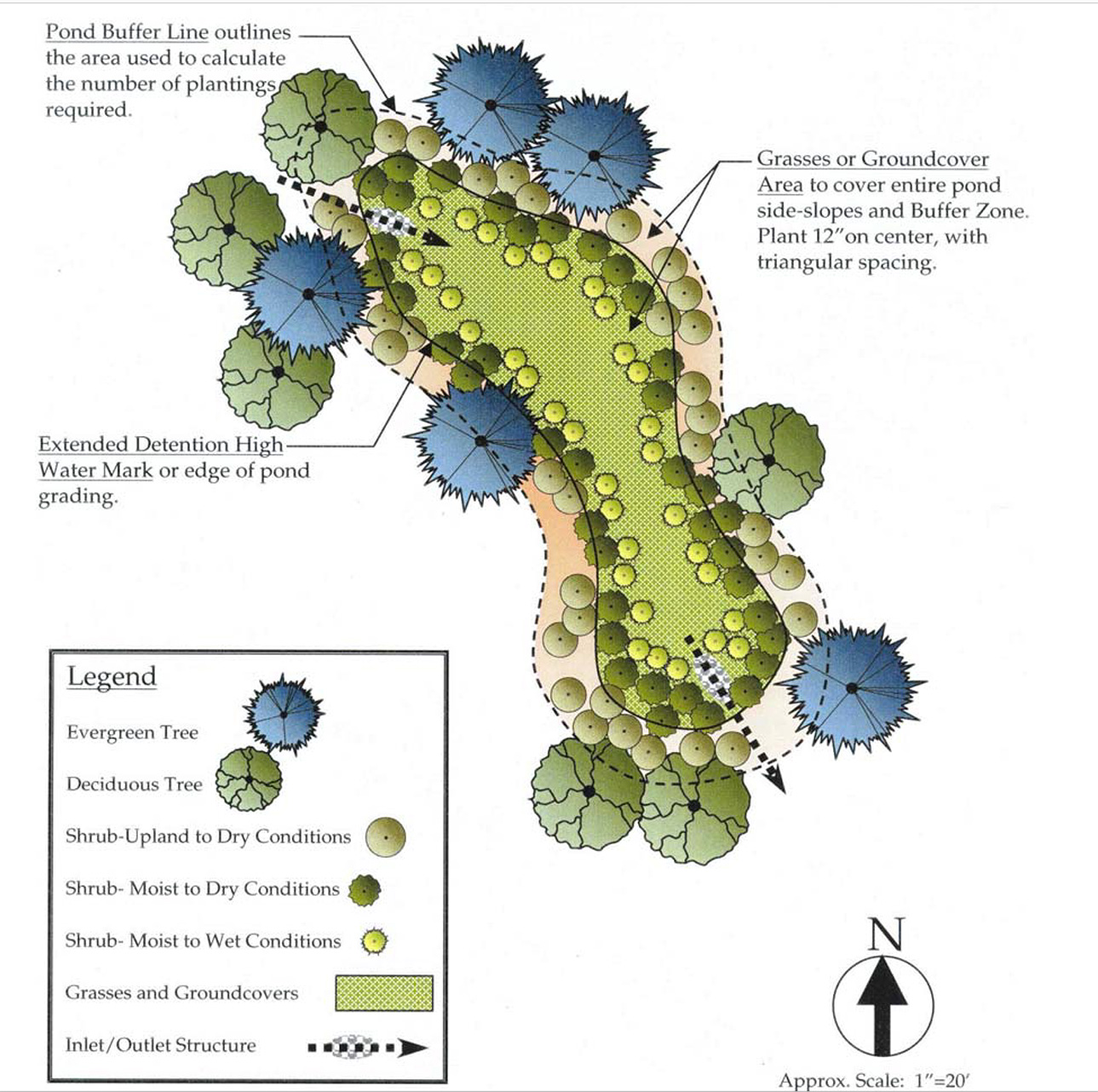WHAT IS UBC’S APPROACH TO RAINWATER?
Low Impact Development (LID) is a green infrastructure approach to rainwater management that uses simple cost-effective landscaped features and other techniques to filter, store, infiltrate and use rainfall where it falls.
The following are diagrammatic Low Impact Development examples for illustrative purposes only.
Actual project site conditions may require designers to consider other design configurations.
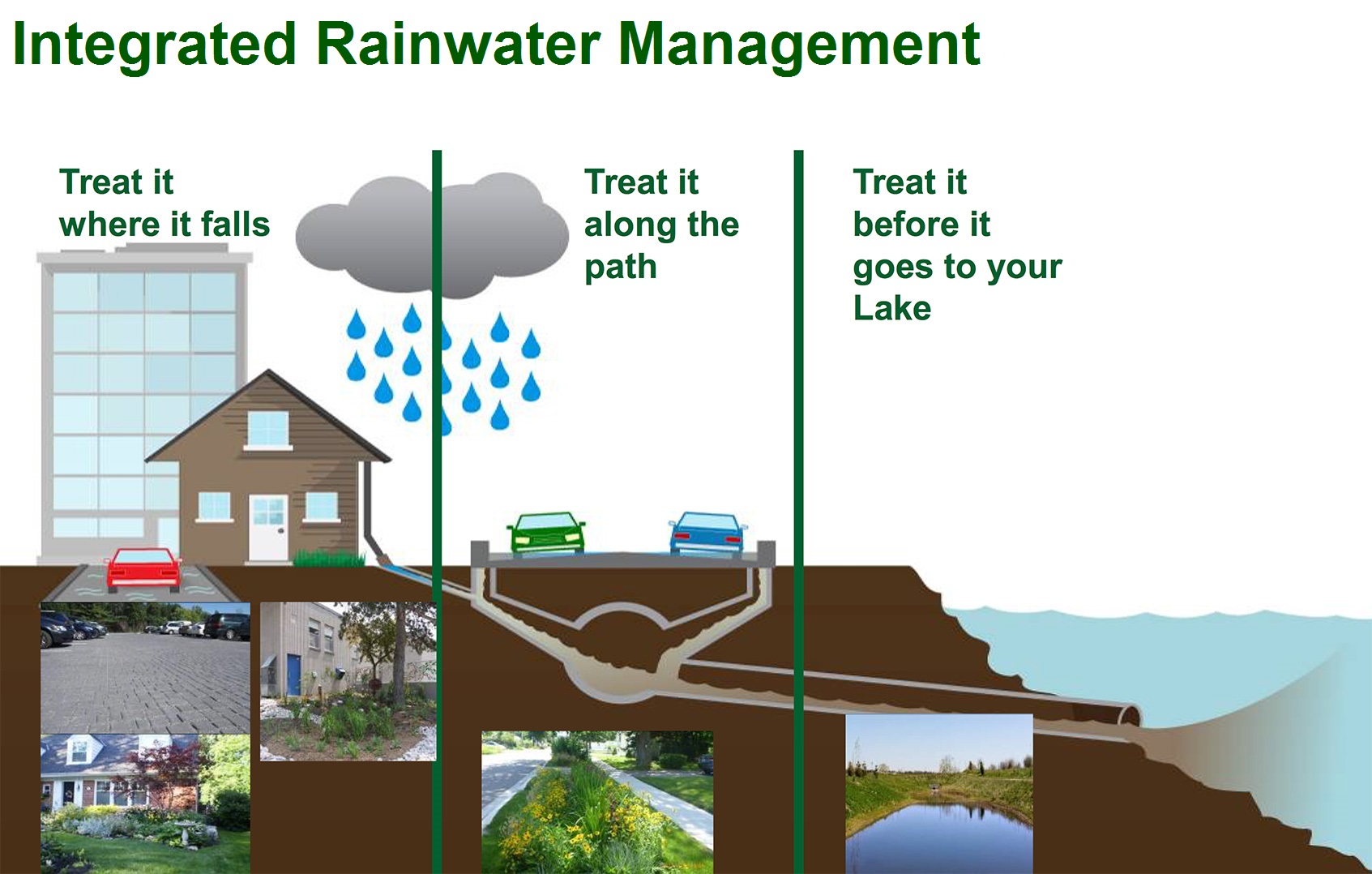
Wet Detention Pond
The following is an example of LID and could be used as a pre-treatment facility upstream of a recharge basin.
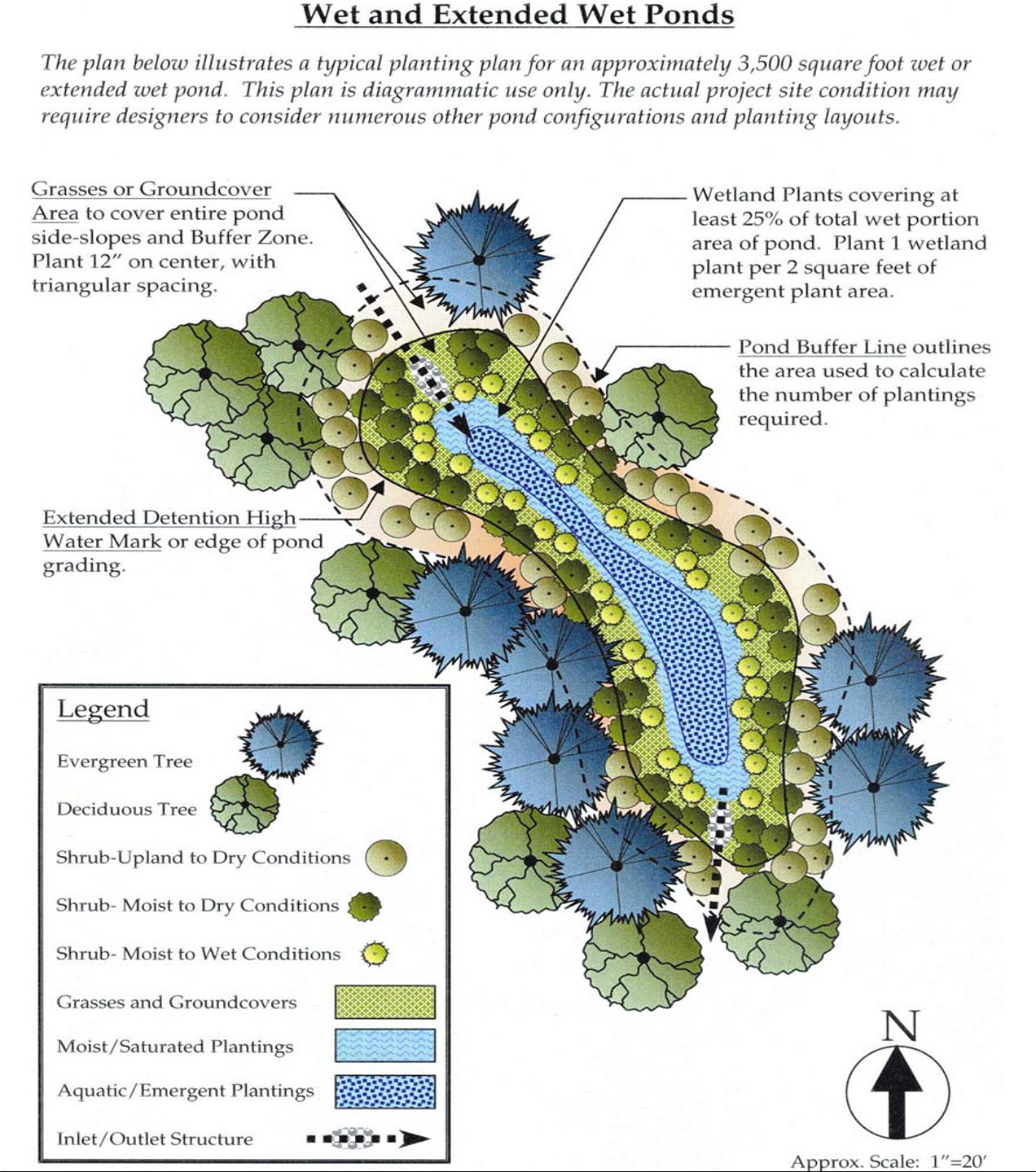
Infiltration Planters
An infiltration planter is a structure or container that is open to the underlying soil. Rainwater temporarily pools on top of the soil before filtering through the planter into the ground.
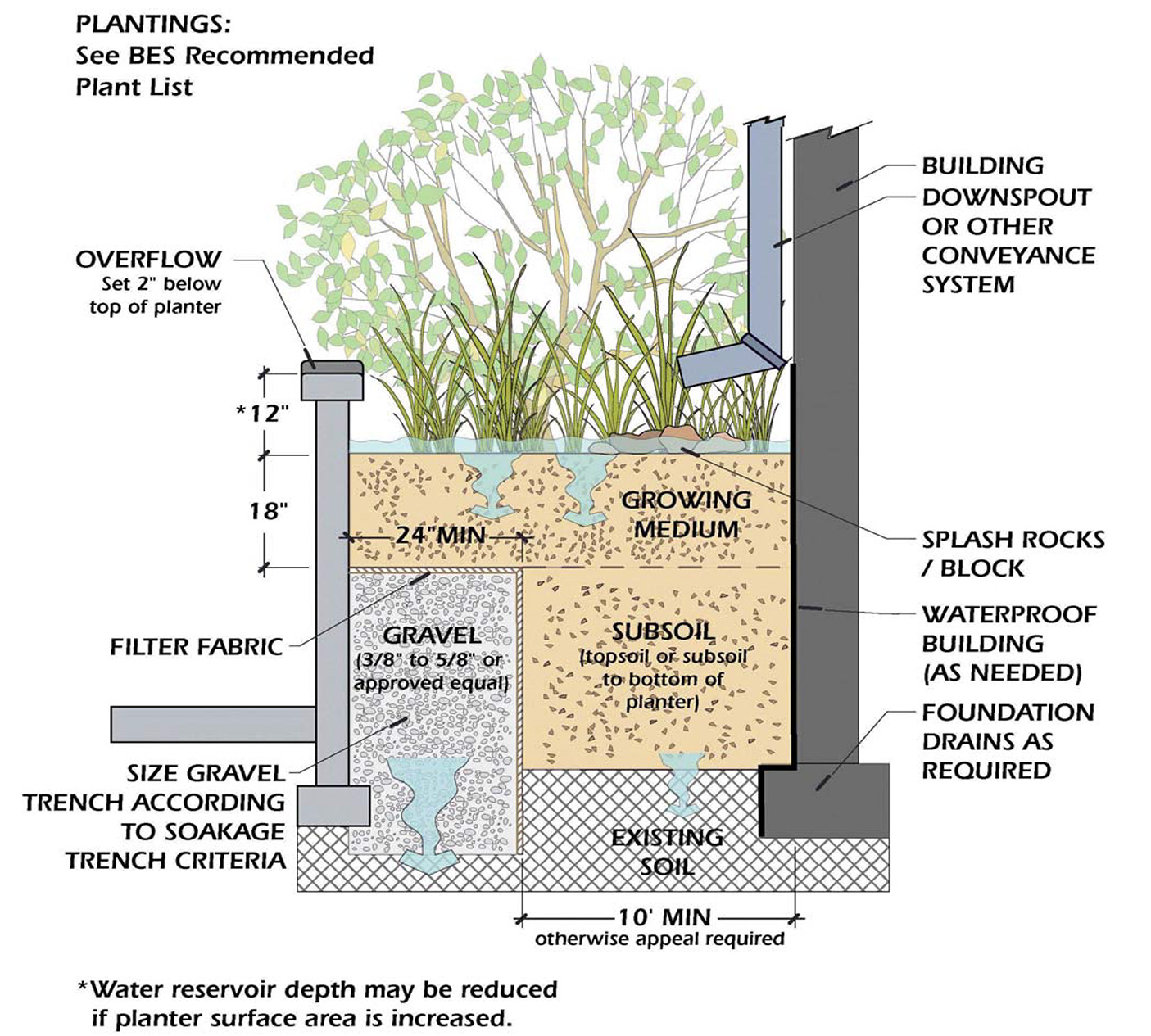
Flow-through Planters
A flow-through planter is a structure or container that is closed to the underlying soil. Rainwater temporarily pools on top of the soil before infiltrating through the planter and any excess water is drained to a destination point.

Swales
A Swale is a low tract of land that is either natural or human-created. A swale is designed to manage runoff, filter pollutants, offer some degree of temporary storage, and increase rainwater infiltration.
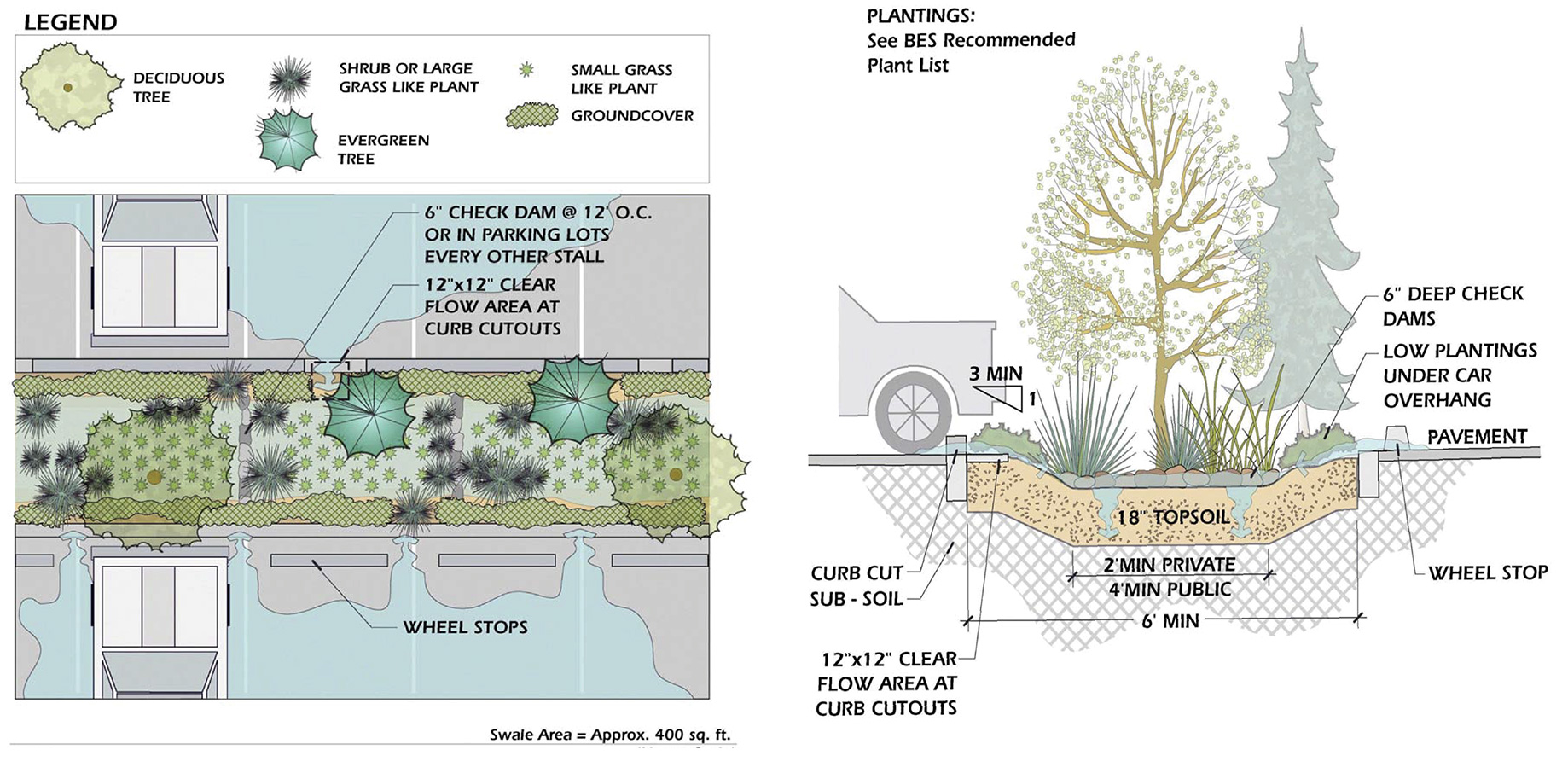
Dry Detention Pond
The plan below illustrates a dry detention pond. This plan is diagrammatic use only. The actual project site condition may require designers to consider numerous other pond configurations and planting layouts.
